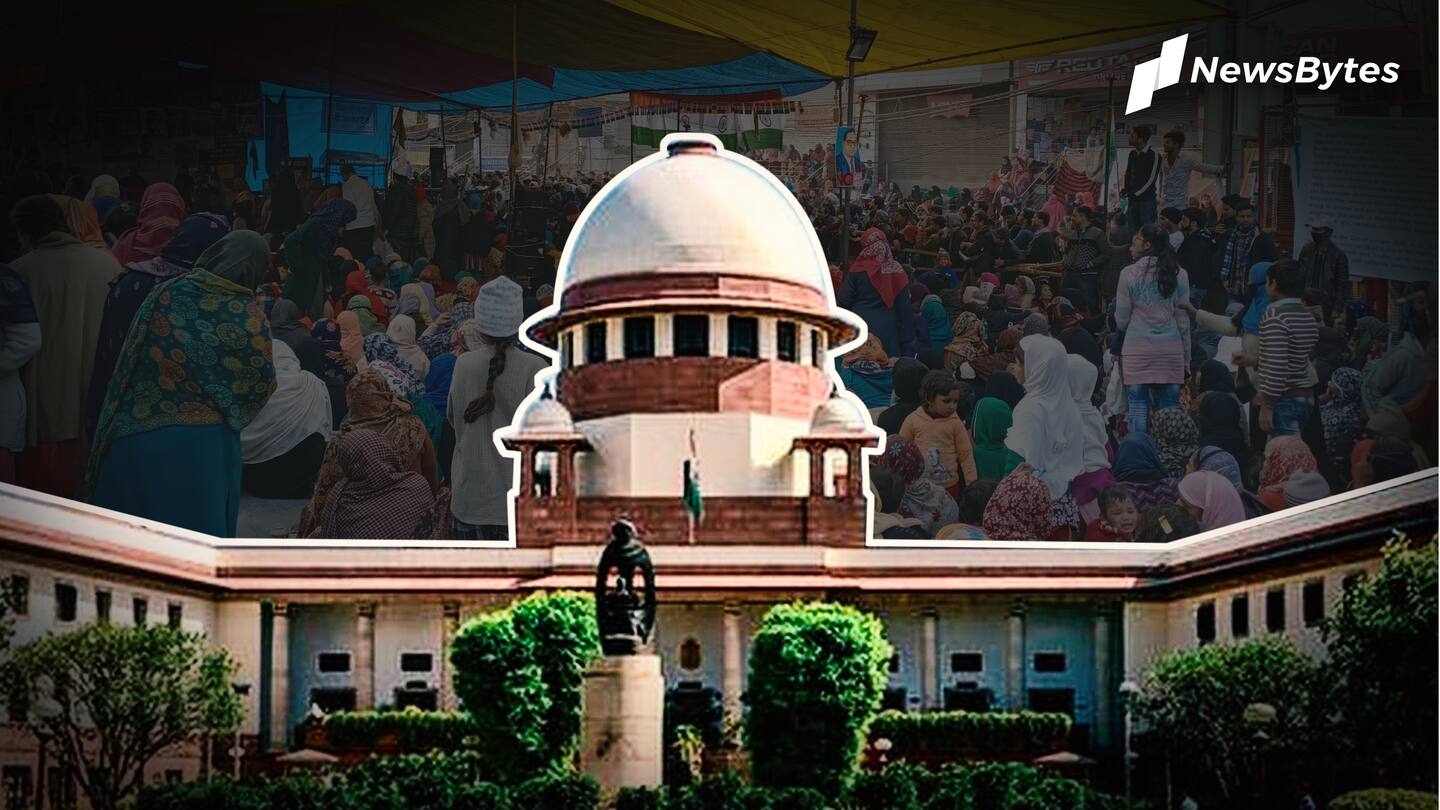
Public places can't be occupied indefinitely: SC on Shaheen Bagh
What's the story
In a declaration having far-reaching consequences, the Supreme Court on Wednesday said public places can't be occupied indefinitely, as it gave the verdict in the Right to Protest v/s The Right to Mobility matter, linked to the Shaheen Bagh sit-in agitation.
Noting that dissent and democracy go hand-in-hand, a three-judge bench of the top court said that protests must happen at a designated spot.
Background
Led by women, Shaheen Bagh became epicenter of anti-CAA protests
The Shaheen Bagh protest, which emerged as the hotspot of resistance against the Citizenship Amendment Act (CAA), started in December 2019, days after the Bill was passed in the Parliament.
Women, who led the agitation, sat in chilly winter, demanding the Narendra Modi-led government to roll back the law, that said minorities from six communities, barring Muslims, were eligible for Indian citizenship.
Inconvenience
Roads were blocked, daily commuters suffered
With protesters sitting on the streets, roads connecting Noida, Delhi, Faridabad, and Gurugram were blocked. Some roads, that weren't linked to the agitation, were also blocked by Delhi Police, due to "law and order" problems.
The inconvenience caused to daily commuters prompted pleas in the top court.
Even in February, SC had told the protesters that they must raise demands, but couldn't block roads.
Looking back
Site was cleared after coronavirus outbreak; SC addressed larger issue
The protesters were vacated on March 24, in view of restrictions associated with coronavirus outbreak.
Nevertheless, the SC agreed to address the matter on the larger issue of balancing the right to protest and the right to free movement of the public.
During the last hearing on September 21, the bench of Justices SK Kaul, Krishna Murari, and Hrishikesh Roy had reserved the verdict.
Quote
Such protests are not acceptable, authorities must act: SC
Today, the court said, "We have to make it clear that public places cannot be occupied indefinitely whether in Shaheen Bagh or elsewhere. These sorts of protests (like Shaheen Bagh) are not acceptable and authorities should act...they must keep such spaces free from obstruction."
Statement
"Administration should do its job, rather than hiding behind judiciary"
Pulling up the administration for failing to clear obstructions and waiting for judicial instructions, the bench commented, "In what manner the administration should act is their responsibility and should not hide behind court orders to carry out administrative functions."
The bench said the judiciary had to step in because authorities failed to take due action.
Earlier, SC said there can't be a "universal policy."
Mediation
The court had also appointed mediators to reach consensus
The Shaheen Bagh protest made it to SC after all attempts to vacate the area proved futile.
In February, the top court tasked senior lawyers Sanjay Hegde and Sadhana Ramachandran with mediation, while appointing former chief information commissioner Wajahat Habibullah for assistance.
Despite a series of talks, the protesters didn't budge. Moreover, siding with protesters, Habibullah told SC they weren't causing the traffic problem.
Riots
Shaheen Bagh-esque protest in East Delhi sparked tensions, riots followed
As the Shaheen Bagh protest became a "model," various agitations akin to it cropped up across India. In Delhi itself, a similar agitation was taking shape near Jaffrabad metro station, but pro-CAA groups moved quickly to dismantle it.
The incident laid roots for communal tensions and in February, East Delhi witnessed riots for the first time in decades.
Over 50 were killed and hundreds injured.